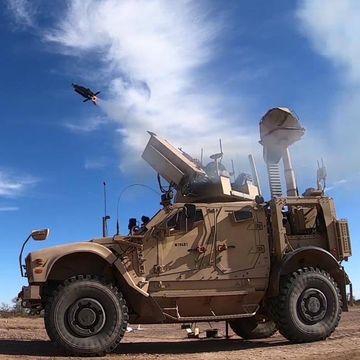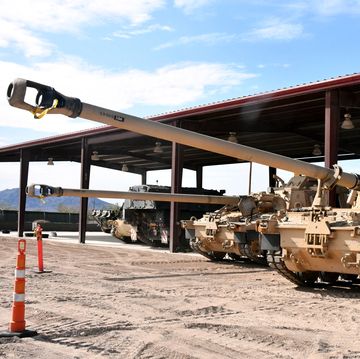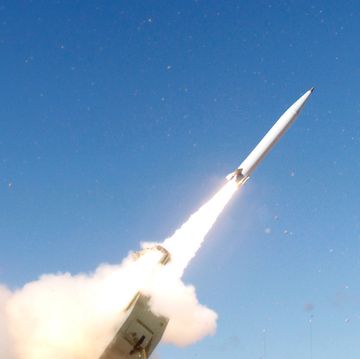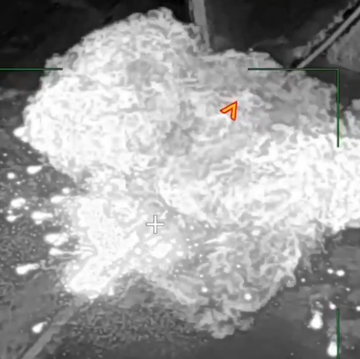Russia's latest cruise missile has been used for the first time in the Syria conflict. Introduced in 2013, the Raduga Kh-101 has been spotted on Russian Tu-95MS heavy bombers (pictured above) lobbing salvos of cruise missiles at Islamic State targets.
The Kh-101 is a subsonic, conventionally armed cruise missile that flies at low level to avoid enemy radar. Compounding the difficulty of detecting the Kh-101 is that the missile is low-observable—not quite stealthy, but still designed with radar evasion in mind.
The missile is large, 24.4 feet long and with a launch weight of 5,060 pounds. A turbofan engine propels the missile at high subsonic speeds, thought to be around .77 Mach.
Armed with an 880 pound conventional warhead, Kh-101 packs twice as much punch as its predecessor. The missile takes advantage of Russia's GLONASS satellite guidance system to achieve accuracy within 30 feet, making it two to three times as accurate as the previous cruise missile.
The truly astounding feature about the Kh-101 is its intercontinental range. The missile has a claimed range of 6,000 miles, meaning it could be launched from Moscow and hit nearly any part of the United States.
Low observable and capable of flying under many air defense radars, the Kh-101 is very useful for so-called "day one" surprise attacks, especially on well-defended targets. A nuclear version of the missile, the Kh-201, is thought to carry a 250 kiloton warhead. And that's what worries the Pentagon.
The prospect of a Russian nuclear cruise missile threat—launched from thousands of miles away—has set the Pentagon on edge. The threat of a surprise attack on Washington DC, a so-called "decapitation strike" that would eliminate the civilian and military leadership in one sudden stroke, is the driver for LENS aerostat network deployed around the nation's capital. The aerostats, one of which broke free and crashed last month, sit at an altitude of 10,000 feet and use radar to scan for incoming cruise missiles.
The choice of the Kh-101 is an odd one. The Kremlin could have attacked undefended Islamic State targets equally well with older, obsolete missiles. Using the latest, most expensive cruise missiles seems like a waste—unless the real intent of the missile bombardment was to show off the Bear's newest claws.

Kyle Mizokami is a writer on defense and security issues and has been at Popular Mechanics since 2015. If it involves explosions or projectiles, he's generally in favor of it. Kyle’s articles have appeared at The Daily Beast, U.S. Naval Institute News, The Diplomat, Foreign Policy, Combat Aircraft Monthly, VICE News, and others. He lives in San Francisco.













